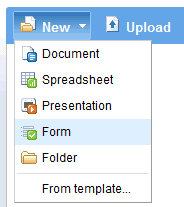
The Official Google Docs blog has a
guest post from a teacher in Great Britain about how his students collaborated using Google docs. When Tom Barrett initially tested the idea, he found that the problems encountered were not intrinsic to docs, or any of the technology, but rather to the act of collaboration itself:
With hindsight it is easier to recognise that the children were not only being introduced to a new piece of technology (the Docs tool) but also their traditional way of working was to be challenged by the new concept of working collaboratively in an online document.
When asked about their biggest challenge, the students were quite direct while describing their
thoughts on the collaboration process:
- The biggest challenge is to stop arguing.
- The thing I find hard would be the working together.
- It is hard to work with other people.
- When we are all not talking and people move stuff and people shout.
Collaboration for any group of any age can be difficult, especially, as Barrett wisely proclaims,
their traditional way of working was to be challenged . . . . As we are all too aware, students learn how to be students; they learn how to get good grades. Collaboration upsets their normal procedures for doing so, as it introduces the unknown of how the other students will affect their output.
The arguments for collaboration center on the help it provides for weaker students, as it incorporates ideas and discussion from everyone. My experience has been that these students definitely benefit by a greater understanding of the project, since they are able to discuss it with others who will help them parse the instructions and gather resources. However, weaker students are often intimidated, letting stronger students do the greater portion of work.
Barrett provides an excellent solution to assuage discomfort of the unknown:
I found it very useful to model the process. Just as I would if I were showing the children a style of writing in Literacy or a type of stretch in PE. I worked with a colleague on an example document and gave the class a running commentary as to what we were doing. As we worked we talked to each other and I underlined some of the key features of what made that short demo collaboration successful for us.
Watching two people interact while creating a document together is a great idea, as it shows students what's expected from them, as well as how the process of collaboration can be successful.
Another method I've found to work well is to make certain each student in the pair or small group has a distinct writing portion to complete, at least for the first draft. Each student could be responsible for a particular topic discussion, subordinate to the overall thesis. One student can write the introduction, another the conclusion. Google docs makes it easy for you to see
who writes
what, which is very important for grade evaluation, even if you plan to assign an overall grade. Students are highly attuned to the 'fairness' of the grade with regard to their input or the lack of it from others.
Once you have evaluated the first draft and provided your comments directly on the document, the students can take on more group-centered activities for revision: suggestions to beef-up weak arguments and insufficient support, spelling, grammar, punctuation use, uniform paragraph transitions, etc.
Collaboration, done right, can truly show us and our students that the sum is greater than the parts alone.







































